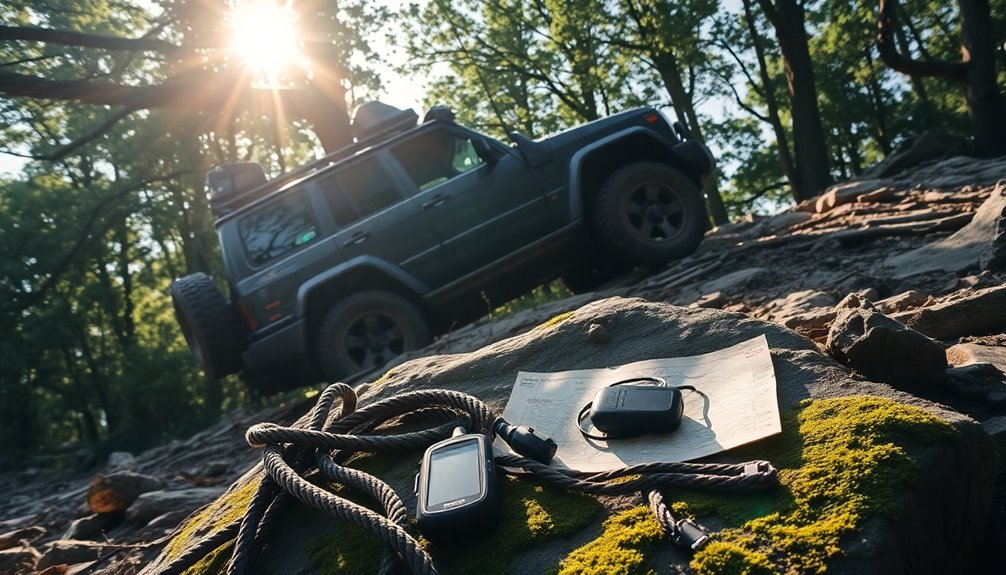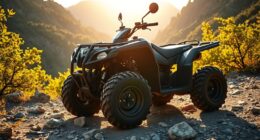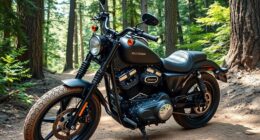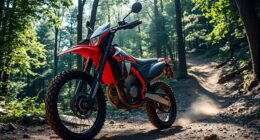Using drones for trail recon allows you to gather detailed aerial imagery, create accurate topographic maps, and assess terrain quickly and safely. Drones can identify hazards, help plan routes effectively, and save you time in remote or difficult areas. With technological advances like obstacle avoidance and AI navigation, you gain reliable and safe flights. To maximize benefits, it’s important to follow local regulations and best practices—keep going to discover how to do that.
Key Takeaways
- Drones enable detailed terrain imaging and mapping, improving trail reconnaissance accuracy and safety.
- They provide rapid surveys of remote or difficult-to-access trail areas, saving time and resources.
- Advanced sensors like LiDAR help create precise 3D models for better trail planning and hazard identification.
- Integration of AI enhances obstacle avoidance, ensuring safer drone navigation during trail reconnaissance.
- Proper adherence to regulations and environmental considerations ensures legal, respectful, and sustainable drone use.
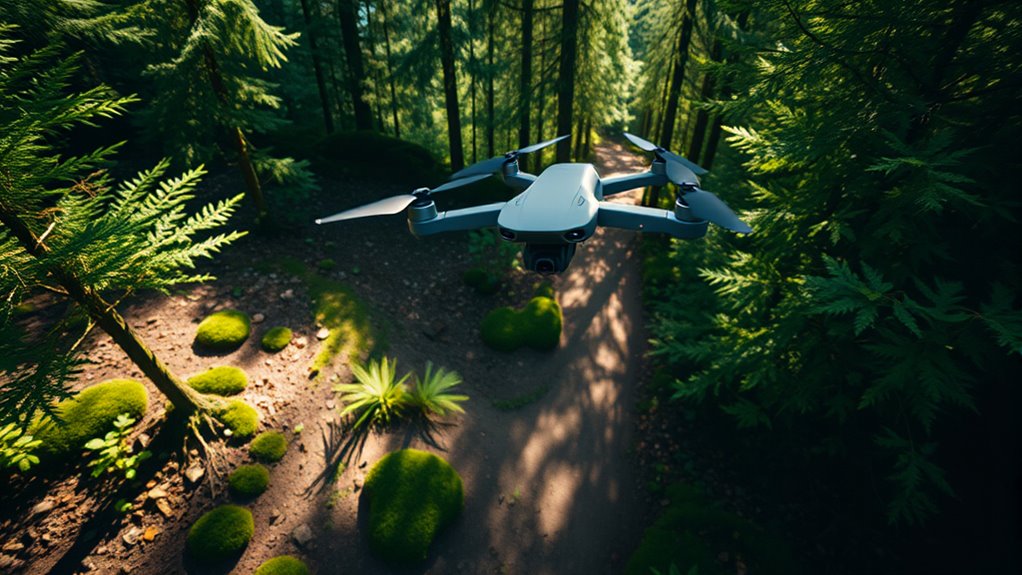
Have you ever wondered how drones are transforming trail reconnaissance? These flying devices have become vital tools for outdoor enthusiasts, trail designers, and rescue teams alike. One of their key advantages lies in advanced mapping technology, which allows you to capture highly detailed images and data of remote or difficult terrain. With drones, you can generate precise topographic maps, identify potential hazards, and plan your routes more effectively than ever before. Their ability to quickly survey large areas saves you time and effort, especially in rugged landscapes where ground-based assessments might be slow or dangerous. By using high-resolution cameras and LiDAR sensors, drones can produce three-dimensional models, giving you an all-encompassing view of the terrain from multiple angles. This data-driven approach enhances safety, improves trail design, and helps avoid environmental impacts, making your reconnaissance more thorough and accurate. Additionally, advancements in AI Security are helping to improve drone navigation systems, making their operation safer and more reliable in complex environments.
However, before you start flying your drone for trail reconnaissance, you need to familiarize yourself with drone regulations. Different regions have specific rules governing drone use, especially in natural areas or protected environments. These regulations often dictate where you can fly, altitude limits, and whether you need special permits or licenses. Ignoring drone regulations can lead to hefty fines or even legal trouble, so it’s imperative to stay informed and compliant. Many authorities require you to register your drone, especially if it exceeds a certain weight, and to keep your flights within visual line-of-sight. Understanding and adhering to these rules not only keeps you safe and legal but also ensures that your drone activities don’t disturb wildlife or other trail users. Additionally, some areas might have restrictions on flying drones near airports or crowded areas, emphasizing the importance of planning your reconnaissance missions ahead of time. Being well-versed in drone regulations also helps you navigate restrictions on data collection and privacy concerns, which can vary from place to place. Before your flight, check local laws, obtain necessary permissions if needed, and always respect the environment and other trail users. Doing so ensures that your trail reconnaissance efforts are sustainable, legal, and respectful of the natural surroundings.
Frequently Asked Questions
What Permissions Are Needed to Fly Drones for Trail Recon?
You need to review drone regulations in your area before flying for trail recon. Typically, you’ll need to obtain flight permits if you’re flying in restricted zones or above certain altitudes. Check local, state, and federal rules to guarantee compliance. Always register your drone if required, and follow safety guidelines. Getting the necessary permissions helps you avoid fines and legal issues while safely capturing trail information.
How Do Drones Handle Adverse Weather Conditions During Recon?
Drones handle adverse weather conditions better with weather resistance features, but extreme conditions like heavy rain or strong winds can still pose risks. Always check your drone’s weather resistance capabilities before flying. Use obstacle avoidance technology to navigate safely around obstacles caused by weather effects, like falling branches or fog. However, it’s safest to avoid flying in severe weather and wait for conditions to improve for accurate and safe trail recon.
What Is the Battery Life of Drones Used in Trail Surveys?
Surprisingly, your drone’s battery endurance can be quite the party pooper, often limiting flight duration to about 20-30 minutes. You’ll find that weather and terrain push those limits even further, making long trail surveys a challenge. Always keep extra batteries on hand, because relying on a single charge isn’t enough. Remember, the more ambitious your survey, the more vital it becomes to manage your drone’s flight duration wisely.
How Is Data From Drone Footage Processed and Analyzed?
You process drone footage through image processing software that enhances and annotates the images. Then, you integrate this data into GIS systems to analyze terrain features, trail conditions, and environmental impacts. This combination allows for precise mapping and efficient decision-making. You can also use specialized tools to generate 3D models, making it easier to assess the trail and plan improvements based on accurate, detailed data.
Are There Privacy Concerns With Drone Trail Reconnaissance?
You’re right to regard privacy concerns with drone trail reconnaissance. Yes, there’s a risk of privacy infringement if drones capture private property or personal activities without consent. To avoid a wolf in sheep’s clothing, guarantee strict data security measures are in place and follow regulations. Transparency with local communities helps build trust, so you’re protecting privacy while gathering valuable trail data.
Conclusion
So, next time you’re considering trail exploration, think about how drones can gently open new paths for you. They can quietly reveal hidden vistas and subtle terrain features, guiding you smoothly along your journey. With their watchful eyes, you might find yourself discovering more than you ever imagined, all while keeping your footsteps light and your experience seamless. Embrace this quiet revolution, and let your adventures soar to new heights—without ever quite leaving the ground.


